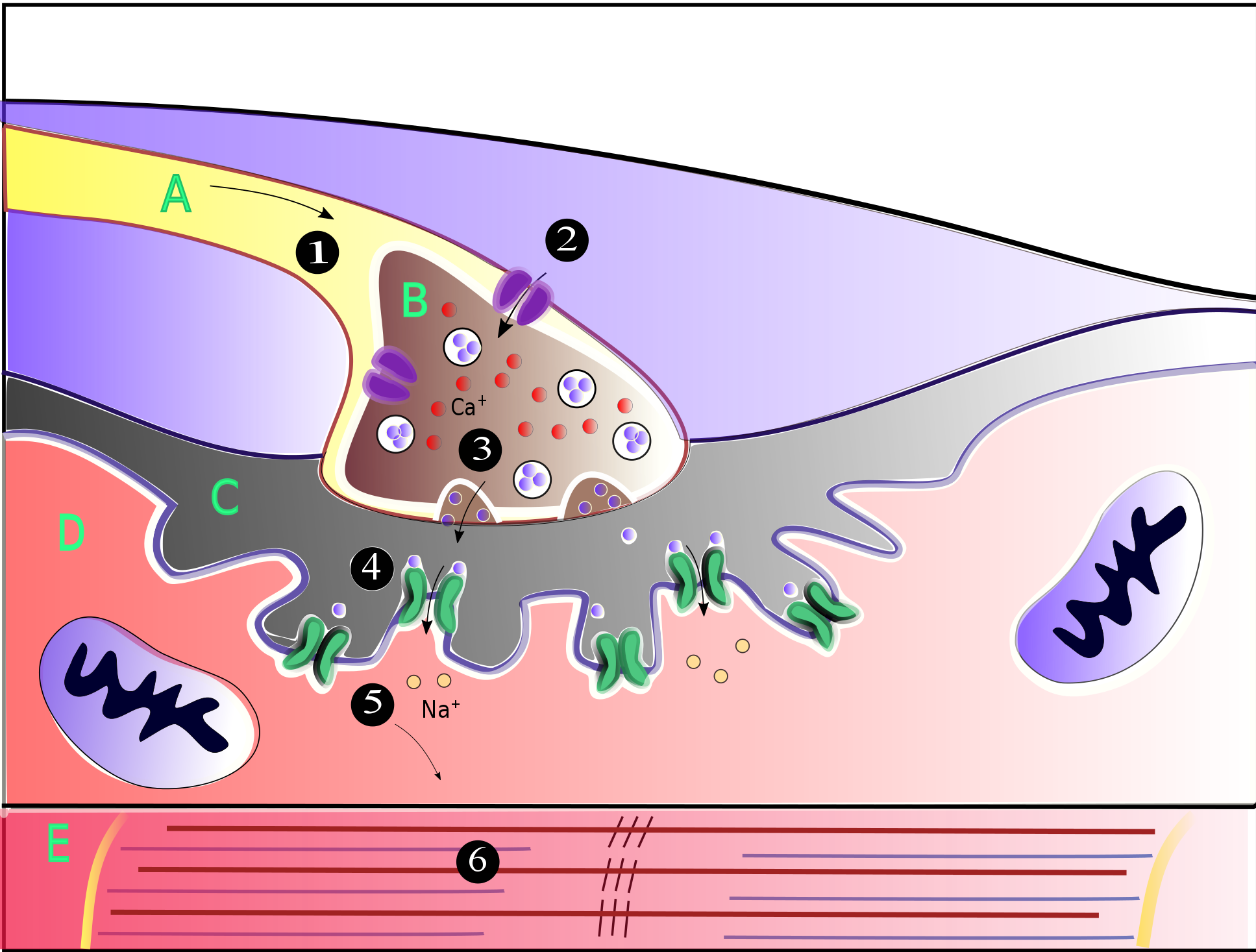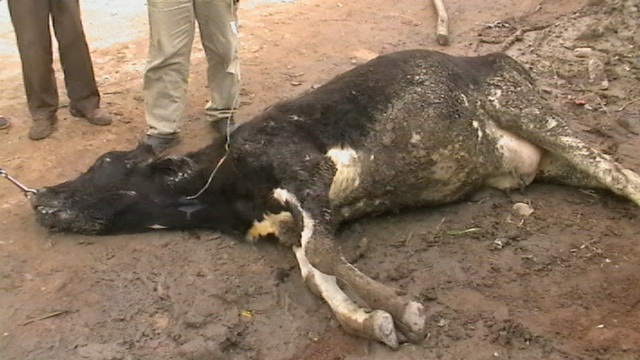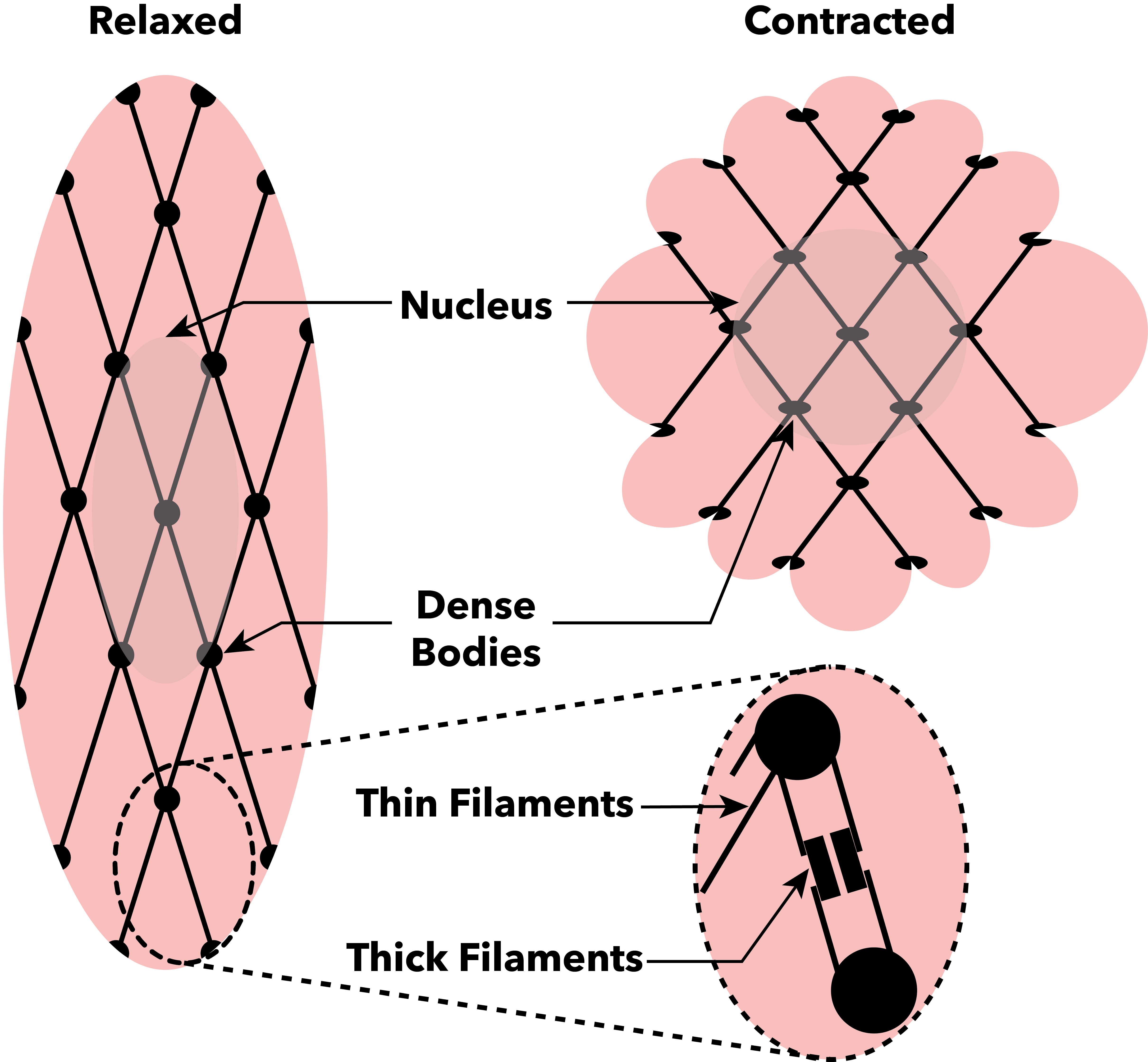|
Fly Spray
Fly spray is a chemical insecticide that comes in an aerosol can that is sprayed into the air to kill flies. Fly sprays will kill various insects such as house flies and wasps. Principles Fly spray contains chemicals (including many organophosphate compounds) that bind to and permanently block the action of an enzyme called acetylcholinesterase. Acetyl choline (ACh) is the nerve transmitter substance released by motor neurones (at a site called the neuromuscular junction) to stimulate muscle contraction. The muscles relax (stop contracting) when the ACh is removed from the neuromuscular junction (NMJ) by the action of acetylcholinesterase. By inhibiting the cholinesterase the insect can no longer break down ACh in the NMJ and so its muscles lock up in a state of tetany (continuous contraction) making flying and respiration impossible, and the insect then dies of asphyxiation. The Fly spray is shown to be effective against black flies. The U.S. Environmental Protection Ag ... [...More Info...] [...Related Items...] OR: [Wikipedia] [Google] [Baidu] |
Neuromuscular Junction
A neuromuscular junction (or myoneural junction) is a chemical synapse between a motor neuron and a muscle fiber. It allows the motor neuron to transmit a signal to the muscle fiber, causing muscle contraction. Muscles require innervation to function—and even just to maintain muscle tone, avoiding atrophy. In the neuromuscular system, nerves from the central nervous system and the peripheral nervous system are linked and work together with muscles. Synaptic transmission at the neuromuscular junction begins when an action potential reaches the presynaptic terminal of a motor neuron, which activates voltage-gated calcium channels to allow calcium ions to enter the neuron. Calcium ions bind to sensor proteins (synaptotagmins) on synaptic vesicles, triggering vesicle fusion with the cell membrane and subsequent neurotransmitter release from the motor neuron into the synaptic cleft. In vertebrates, motor neurons release acetylcholine (ACh), a small molecule neurotransmitter, which ... [...More Info...] [...Related Items...] OR: [Wikipedia] [Google] [Baidu] |
Carcinogen
A carcinogen () is any agent that promotes the development of cancer. Carcinogens can include synthetic chemicals, naturally occurring substances, physical agents such as ionizing and non-ionizing radiation, and biologic agents such as viruses and bacteria. Most carcinogens act by creating mutations in DNA that disrupt a cell's normal processes for regulating growth, leading to uncontrolled cellular proliferation. This occurs when the cell's DNA repair processes fail to identify DNA damage allowing the defect to be passed down to daughter cells. The damage accumulates over time. This is typically a multi-step process during which the regulatory mechanisms within the cell are gradually dismantled allowing for unchecked cellular division. The specific mechanisms for carcinogenic activity is unique to each agent and cell type. Carcinogens can be broadly categorized, however, as activation-dependent and activation-independent which relate to the agent's ability to engage dir ... [...More Info...] [...Related Items...] OR: [Wikipedia] [Google] [Baidu] |
Environmental Group
The environmental movement (sometimes referred to as the ecology movement) is a social movement that aims to protect the natural world from harmful environmental practices in order to create sustainable living. In its recognition of humanity as a participant in (not an enemy of) ecosystems, the movement is centered on ecology, health, as well as human rights. The environmental movement is an international movement, represented by a range of environmental organizations, from enterprises to grassroots and varies from country to country. Due to its large membership, varying and strong beliefs, and occasionally speculative nature, the environmental movement is not always united in its goals. At its broadest, the movement includes private citizens, professionals, religious devotees, politicians, scientists, nonprofit organizations, and individual advocates like former Wisconsin Senator Gaylord Nelson and Rachel Carson in the 20th century. Since the 1970s, public awareness, envir ... [...More Info...] [...Related Items...] OR: [Wikipedia] [Google] [Baidu] |
Dichlorvos
Dichlorvos (2,2-dichlorovinyl dimethyl phosphate, commonly abbreviated as an DDVP) is an organophosphate widely used as an insecticide to control household pests, in public health, and protecting stored products from insects. The compound has been commercially available since 1961. It has become controversial because of its prevalence in urban waterways and the fact that its toxicity extends well beyond insects. Since 1988, dichlorvos cannot be used as a plant protection product in the EU. Use Dichlorvos is effective against mushroom flies, aphids, spider mites, caterpillars, thrips, and whitefly, whiteflies in greenhouses and in outdoor crops. It is also used in the milling and grain handling industries and to treat a variety of parasitic worm infections in animals and humans. It is fed to livestock to control botfly larvae in manure. It acts against insects as both a contact poison and an ingested poison. It is available as an aerosol and soluble concentrate. It is also used ... [...More Info...] [...Related Items...] OR: [Wikipedia] [Google] [Baidu] |
Asphyxiation
Asphyxia or asphyxiation is a condition of deficient supply of oxygen to the body which arises from abnormal breathing. Asphyxia causes generalized hypoxia, which affects all the tissues and organs, some more rapidly than others. There are many circumstances that can induce asphyxia, all of which are characterized by the inability of a person to acquire sufficient oxygen through breathing for an extended period of time. Asphyxia can cause coma or death. In 2015, about 9.8 million cases of unintentional suffocation occurred which resulted in 35,600 deaths. The word asphyxia is from Ancient Greek "without" and , "squeeze" (throb of heart). Causes Situations that can cause asphyxia include but are not limited to: airway obstruction (such as from asthma, laryngospasm, or simple blockage from the presence of foreign materials); from being in environments where oxygen is not readily accessible: such as underwater, in a low oxygen atmosphere, or in a vacuum; environments where ... [...More Info...] [...Related Items...] OR: [Wikipedia] [Google] [Baidu] |
Tetany
Tetany or tetanic seizure is a medical sign consisting of the involuntary contraction of muscles, which may be caused by disorders that increase the action potential frequency of muscle cells or of the nerves that innervate them. Cramp, Muscle cramps caused by the disease tetanus are not classified as tetany; rather, they are due to a lack of inhibition to the neurons that supply muscles. Tetanic contractions (physiologic tetanus) have a broad range of muscle contraction types, of which tetany is only one. Signs and symptoms Tetany is characterized by contraction of distal muscles of the hands (carpal spasm with extension of interphalangeal joints and adduction and flexion of the metacarpophalangeal joints) and feet (pedal spasm) and is associated with tingling around the mouth and distally in the limbs. Causes * The usual cause of tetany is a deficiency of calcium. An excess of phosphate (high phosphate-to-calcium ratio) can also trigger the spasms. * Underfunction of the pa ... [...More Info...] [...Related Items...] OR: [Wikipedia] [Google] [Baidu] |
Cholinesterase
The enzyme cholinesterase (EC 3.1.1.8, choline esterase; systematic name acylcholine acylhydrolase) catalyses the hydrolysis of choline-based esters: : an acylcholine + H2O = choline + a carboxylate Several of these serve as neurotransmitters. Thus, it is either of two enzymes that catalyze the hydrolysis of these cholinergic neurotransmitters, such as breaking acetylcholine into choline and acetic acid. These reactions are necessary to allow a cholinergic neuron to return to its resting state after activation. For example, in muscle contraction, acetylcholine at a neuromuscular junction triggers a contraction; but for the muscle to relax afterward, rather than remaining locked in a tense state, the acetylcholine must be broken down by a choline esterase. The main type for that purpose is acetylcholinesterase (also called choline esterase I or erythrocyte cholinesterase); it is found mainly in chemical synapses and red blood cell membranes. The other type is butyrylcholin ... [...More Info...] [...Related Items...] OR: [Wikipedia] [Google] [Baidu] |
Muscle Contraction
Muscle contraction is the activation of Tension (physics), tension-generating sites within muscle cells. In physiology, muscle contraction does not necessarily mean muscle shortening because muscle tension can be produced without changes in muscle length, such as when holding something heavy in the same position. The termination of muscle contraction is followed by muscle relaxation, which is a return of the muscle fibers to their low tension-generating state. For the contractions to happen, the muscle cells must rely on the change in action of two types of Myofilament, filaments: thin and thick filaments. The major constituent of thin filaments is a chain formed by helical coiling of two strands of actin, and thick filaments dominantly consist of chains of the Motor protein, motor-protein myosin. Together, these two filaments form myofibrils - the basic functional organelles in the skeletal muscle system. In vertebrates, Muscle cell#Muscle contraction in striated muscle, skele ... [...More Info...] [...Related Items...] OR: [Wikipedia] [Google] [Baidu] |
Motor Neurones
A motor neuron (or motoneuron), also known as efferent neuron is a neuron whose cell body is located in the motor cortex, brainstem or the spinal cord, and whose axon (fiber) projects to the spinal cord or outside of the spinal cord to directly or indirectly control effector organs, mainly muscles and glands. There are two types of motor neuron – upper motor neurons and lower motor neurons. Axons from upper motor neurons synapse onto interneurons in the spinal cord and occasionally directly onto lower motor neurons. The axons from the lower motor neurons are efferent nerve fibers that carry signals from the spinal cord to the effectors. Types of lower motor neurons are alpha motor neurons, beta motor neurons, and gamma motor neurons. A single motor neuron may innervate many muscle fibres and a muscle fibre can undergo many action potentials in the time taken for a single muscle twitch. Innervation takes place at a neuromuscular junction and twitches can become superimposed as a ... [...More Info...] [...Related Items...] OR: [Wikipedia] [Google] [Baidu] |
Cervo093 .
{{dab ...
Cervo may refer to: Places Italy * Cervo, Liguria, a comune in the province of Imperia in the region of Liguria * Cervo (river), a tributary of the River Sesia in the Piedmont region Portugal * Cervo (Ribeira de Pena), a civil parish in the municipality of Ribeira de Pena Spain *Cervo, Lugo, a municipality of the Province of Lugo Automobiles * Suzuki Cervo, a small Kei car made by Japanese carmaker Suzuki is a Japanese multinational mobility manufacturer headquartered in Hamamatsu, Shizuoka Prefecture, Shizuoka. It manufactures automobiles, motorcycles, all-terrain vehicles (ATVs), outboard motor, outboard marine engines, wheelchairs and a va ... [...More Info...] [...Related Items...] OR: [Wikipedia] [Google] [Baidu] |
Acetyl Choline
Acetylcholine (ACh) is an organic compound that functions in the brain and body of many types of animals (including humans) as a neurotransmitter. Its name is derived from its chemical structure: it is an ester of acetic acid and choline. Parts in the body that use or are affected by acetylcholine are referred to as cholinergic. Acetylcholine is the neurotransmitter used at the neuromuscular junction. In other words, it is the chemical that motor neurons of the nervous system release in order to activate muscles. This property means that drugs that affect cholinergic systems can have very dangerous effects ranging from paralysis to convulsions. Acetylcholine is also a neurotransmitter in the autonomic nervous system, both as an internal transmitter for both the sympathetic and the parasympathetic nervous system, and as the final product released by the parasympathetic nervous system. Acetylcholine is the primary neurotransmitter of the parasympathetic nervous system. In the ... [...More Info...] [...Related Items...] OR: [Wikipedia] [Google] [Baidu] |





